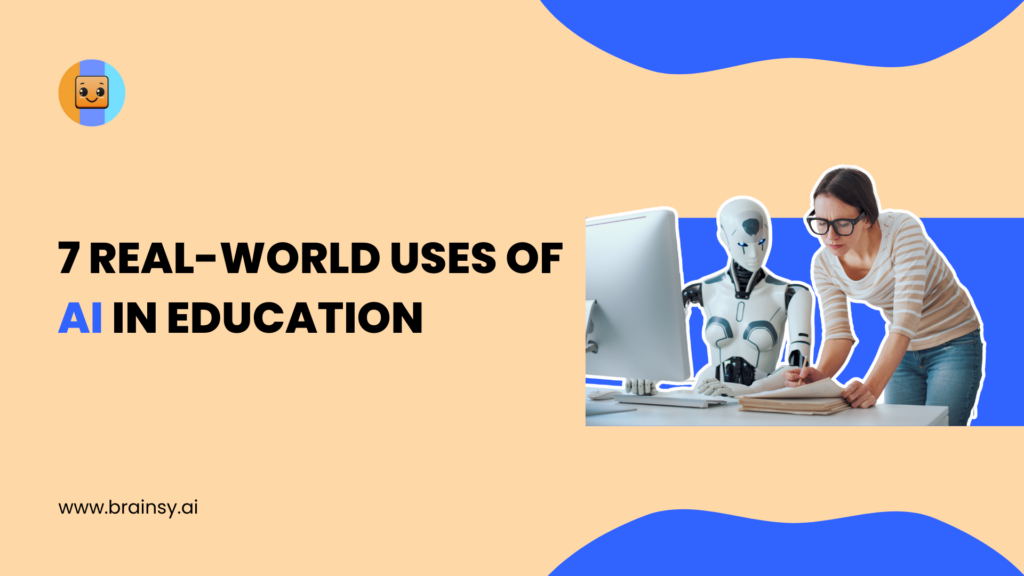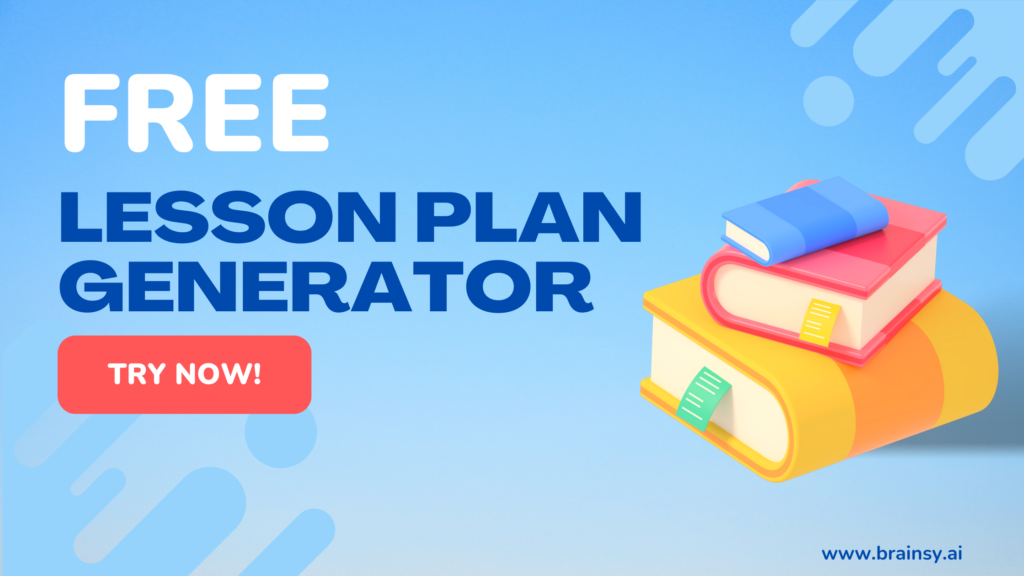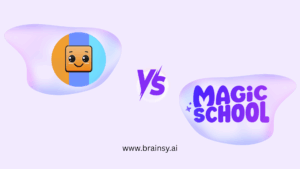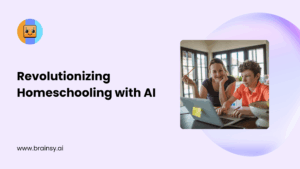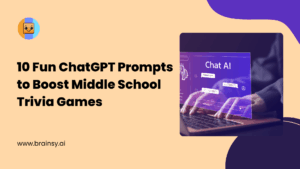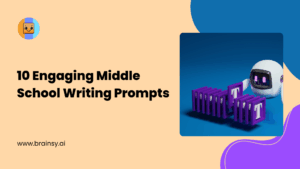Artificial Intelligence (AI) is no longer a futuristic concept; it has firmly established its presence in the educational landscape. AI in Education is being adopted globally, as schools begin to harness its power to enhance teaching methodologies, streamline administrative tasks, and create customized learning experiences for students. From adaptive learning tools to an AI lesson plan generator, educators now have access to intelligent solutions that support planning and instruction. This article explores seven innovative ways that educational institutions are integrating AI personalized learning into their classrooms, showcasing real-world applications of artificial intelligence in education that are transforming the learning environment and paving the way for personalized education.
7 Real-World Ways Schools Are Using Artificial Intelligence Today
1. Personalized Learning Experiences
One of the most significant advantages of AI in Education is its ability to tailor learning experiences to individual student needs. By analyzing data on student performance, AI systems can identify strengths and weaknesses, allowing educators to customize lesson plans accordingly. AI in schools empowers teachers to deliver more targeted instruction and address learning gaps more effectively. This approach to personalization in education is revolutionizing how students learn and teachers instruct.
Adaptive Learning Platforms
Adaptive learning platforms, a prime example of personalized learning technology, utilize adaptive learning AI algorithms to adjust the difficulty of tasks based on a student’s performance. These personalized learning platforms create customized learning experiences for each student. For instance, if a student struggles with a particular math concept, the system can provide additional resources and practice problems tailored to that topic. This personalized approach not only helps students grasp challenging concepts but also fosters a sense of ownership over their learning journey.
Intelligent Tutoring Systems
Intelligent tutoring systems (ITS) are another application of AI in Education that provides one-on-one support to students, acting as virtual tutors. These personalized learning tools can simulate a human tutor by offering hints, feedback, and personalized study plans in real-time. For example, platforms like Carnegie Learning use AI adaptive learning to guide students through complex problem-solving processes, ensuring they understand the underlying principles rather than just memorizing answers. These cognitive tutoring systems represent a significant advancement in personalized instruction.
2. Enhanced Administrative Efficiency
AI is also making waves in the administrative side of education, helping schools streamline operations and reduce the workload on staff through AI integration.
Automated Grading Systems
Grading can be a time-consuming task for educators, especially in large classrooms. AI in Education has introduced AI-powered grading systems that can automate the evaluation of assignments, quizzes, and exams, providing instant feedback to students. Tools like Gradescope allow teachers to upload assignments, and the AI system can quickly assess and score them, freeing up valuable time for educators to focus on tailored instruction and personalized teaching.
Predictive Analytics for Enrollment Management
Schools are leveraging AI in schools and machine learning to analyze enrollment trends and predict future student needs. By examining historical data, AI can help institutions make informed decisions about resource allocation, staffing, and program offerings. This proactive approach ensures that schools are better prepared to meet the demands of their student population and create a more personalized learning environment.
3. Intelligent Content Creation
AI is revolutionizing the way educational content is created and delivered, making it more engaging and accessible for students through dynamic content delivery.
AI-Generated Learning Materials
AI in Education is transforming how learning materials are created. AI-powered educational tools can generate customized learning experiences, such as quizzes, flashcards, and study guides, based on the curriculum and individual student needs. For instance, platforms like ScribeSense use AI to create tailored resources that align with specific learning objectives, ensuring that students receive relevant and targeted support. This approach to personalized curriculum design enhances the overall learning experience.
Virtual Reality and Augmented Reality Integration
4. Improved Student Engagement
AI tools are being utilized to foster greater student engagement and motivation in the classroom, creating an AI-driven classroom environment that promotes active participation and personalized teaching.
Gamification of Learning
Gamification incorporates game-like elements into educational activities, making learning more enjoyable. AI for students can analyze interactions and preferences to create personalized gamified experiences and adaptive independent practices. Platforms like Kahoot! use AI to adapt quizzes and challenges based on student performance, encouraging friendly competition and collaboration among peers. This approach supports student voice and choice in the learning process.
Chatbots for Student Support
AI-powered chatbots, acting as intelligent assistants, are becoming increasingly popular in educational settings, providing students with instant access to information and support. These chatbots can answer frequently asked questions, assist with scheduling, and even offer academic guidance. By providing 24/7 support, chatbots help students feel more connected to their school community and offer personalized feedback on demand. As a growing application of AI in Education, these tools enhance accessibility and responsiveness in the learning environment.
5. Data-Driven Decision Making
AI enables educators and administrators to make informed decisions based on data analysis, leading to improved outcomes for students through data-driven instruction.
Learning Analytics
Learning analytics involves collecting and analyzing data on student performance to identify trends and areas for improvement. AI can process vast amounts of data quickly, providing educators with actionable insights. For example, by analyzing attendance records, assignment completion rates, and assessment scores, schools can identify at-risk students and implement targeted interventions. This precision teaching approach allows for more effective personalized learning services.
Curriculum Development
AI can also play a role in curriculum development by analyzing the effectiveness of existing programs. By evaluating student performance data, educators can determine which teaching methods and materials yield the best results. This data-driven approach ensures that curricula remain relevant and effective in meeting student needs, supporting the creation of a personalized learning curriculum.
6. Supporting Diverse Learning Needs
AI is instrumental in creating inclusive learning environments that cater to diverse student populations, enhancing accessibility for all learners through differentiation.
Assistive Technologies
AI-powered assistive technologies are helping students with disabilities access educational resources more effectively, providing enhanced accessibility. Tools like speech recognition software and text-to-speech applications enable students with learning differences to engage with content in ways that suit their individual needs. For instance, students with dyslexia can benefit from AI-driven reading tools that provide real-time support and feedback, demonstrating the benefits of personalized learning for diverse learners. The integration of AI in schools ensures that inclusive education becomes more achievable and impactful for all students.
Language Translation Services
In increasingly multicultural classrooms, AI language translation services are breaking down language barriers. Tools leveraging natural language processing, like Google Translate, can provide instant translations of educational materials, allowing non-native speakers to participate fully in classroom discussions and activities. This fosters a more inclusive environment where all students can thrive and receive personalized learning experiences regardless of their linguistic background.
7. Preparing Students for the Future
As AI continues to shape the workforce, schools are integrating AI education into their curricula to prepare students for future careers in an AI-driven world.
AI Literacy Programs
To equip students with the skills needed in an AI-driven world, many schools are implementing AI literacy programs. These programs teach students the fundamentals of AI, including its applications, ethical considerations, and potential impact on society. By fostering an understanding of AI, schools are empowering students to navigate the complexities of the digital age and preparing them for personalized learning paths in their future careers.
Collaboration with Industry
Schools are increasingly partnering with technology companies to provide students with real-world experiences in AI. Through internships, workshops, and mentorship programs, students gain hands-on exposure to AI applications in various industries. This collaboration not only enhances students’ understanding of AI but also helps AI for teachers by bridging the gap between personalized learning in school and real-world applications, supporting educators in integrating practical AI knowledge into their teaching.
Conclusion
The integration of AI in education is transforming the way students learn, teachers instruct, and schools operate. From customized learning experiences to enhanced administrative efficiency, AI in schools is paving the way for a more dynamic and inclusive educational landscape. As schools continue to explore innovative applications of AI personalized learning, the potential for improved student outcomes and engagement is limitless. Embracing this technology will not only enrich the learning experience but also prepare students for a future where AI plays an increasingly vital role in society.
By leveraging the power of AI, educational institutions can create a more responsive, engaging, and effective learning environment that meets the diverse needs of all students. The benefits of personalized learning, enabled by AI, include improved student engagement, better retention of information, and the development of critical thinking skills. As we move forward, it is essential for educators, administrators, and policymakers to collaborate in harnessing the full potential of AI to shape the future of education, creating personalized learning environments that adapt to each student’s unique needs and learning styles.
To support this transition, educators can explore tools like Brainsy.ai, an innovative AI tool for education that helps generate lesson plans, personalize instruction, and streamline classroom tasks.

